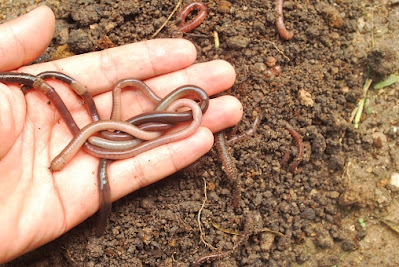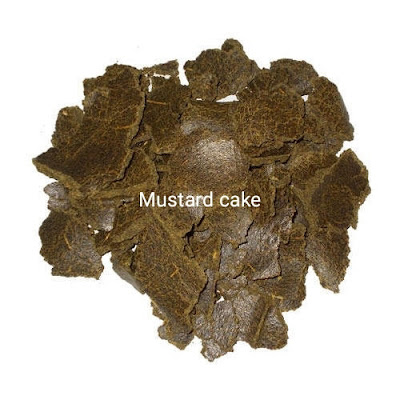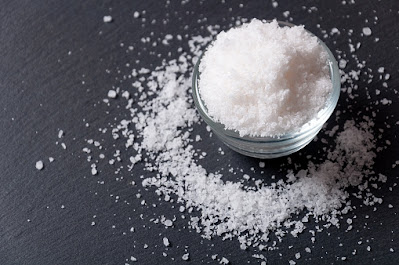Best organic fertilizers for your garden, farm and Lawn
Best organic fertilizers for your garden, farm and Lawn
Hey, do you want to do sustainable farming. Then here's the list of top and best organic fertilizers for you. This will help you in doing a more sustainable farming in more economic way.
Introduction
First of all let's take a look at following points :- We all know that the Major nutrients or Macronutrients found in fertilizer are nitrogen (N), phosphorus (P) and potassium(K) – that is NPK and each fertilizer has a ratio of these nutrients mentioned on the labels. This NPK ratio is very important to decide what you want to achieve from your plants.
Nitrogen (N) is required for growth of foliage, that’s leaves of the plant.
Phosphorus (P) is important for strong root growth and flowering and fruiting.
Potassium (K) helps regulate important functional processes in a plant and make the plant healthy.
The Minor trace elements or Micronutrients are also important and include iron (Fe), boron (B), chlorine (Cl), manganese (Mn),zinc (Zn), copper (Cu), sulphur and many more.
We also know that the use of Chemical or Synthetic fertilizers is harmful and hazardous to all living organisms on earth. On the other hand, we also know the benefits of using organic fertilizers.
List or Best organic fertilizers
1. Cow Dung Manure: This has been the universal fertilizer since ages. Not only cow dung, you can also use horse dung, goat dung and so on. But remember, it has to be fully decomposed to be used as a fertilizer.
Generally, It has a NPK ratio of 2:1:1 +/-0.5 and this has a decent amount of all three major nutrients. Apart from mixing it in your potting mix in about 30% proportion, generally a handful of cowdung once every month or twice a month is good enough for most flowering and fruiting plants.
2. Vermicompost: This is nothing but earthworm poop or earthworm castings. Generally, It has a NPK ratio of 2:1:1 +/-0.5 and can be used in place of cow dung manure or a mixture of both.
Apart from mixing it in your potting mix in about 30% proportion, generally a handful of vermicompost once in a month or twice a month is good enough for most of flowering and fruiting plants.3 . Blood Meal: . This fertilizer is created using powdered animal blood.
Generally, Blood meal has a NPK ration of 12:1.5:0.5. This means it is high in nitrogen, and low in other elements. One important point to remember while using blood meal is it is highly acidic and over dose can cause fertilizer burn which usuallyhappens with chemical fertilizers.
But the advantage of using Blood meal is its highly fast acting like the chemical fertilizers and can be used to quickly healing plants with nitrogen deficiency. Add half to 1 teaspoon near the roots of the plant and water the plant and you should see the results within 2 weeks.
4. Fish Meal :As the name suggests, its made from fish and fish bones. Generally, It has a NPK ratio of 5:2:2 or may be different depending on the company label.
This too is fairly fast-acting fertilizer similar to blood meal and apart from nitrogen, It has decent amounts of phosphorus and calcium as well.
5. Chicken or Poultry Manure: This generallyhas NPK of 4:3:3 +/-1 and has more nitrogen content than cowdung. This is also fast acting and hence over dose can burn your plants.
Usery little dosage, similar to blood meal. The Best way to use these 3 fertilizers – that is blood meal, fish meal and chicken manure, is to add a small amount to the soil before planting or to quickly heal a plant with nutrient deficiencies.
6. Bone Meal: This needs no introduction. This is made from powdered animal bones which is available either as fine steamed Bone meal powder or coarse powder for slower release, that is for the entire growth cycle of a plant.
This generally has NPK of 4:20:0.Bone meal is high in phosphorous content and very important for strong roots and healthy flowering and fruiting. Adding one table spoon per medium sized container mixed into the potting soil is sufficient for the entire growth cycle.
7. Rock Phosphate: This is a alternative to bone meal with high phosphorous content with NPK of about 0:20:0.
You can either add this while you are preparing potting mix – 1 table spoon mixed with a potting mix volume of a 12 to 15 inch container or use 1 to 2 teaspoons of once in about 3 months per plant of its already in soil or potted. Read detailed use of Rock phosphate.
8. Seaweed: This fast-acting fertilizer is available for free along most coastlines. Its NPK is about 2:1:4. Its high in potassium as well. It also has plenty of micronutrients like zinc and iron. Sea weed is considered highly beneficial to plants that need high levels of potassium.
Commercially it’s a available as either Zyme Granules or Seaweed liquid extract which also contains humic acid, fulvic acids and other useful amino acids.
You can add half to one teaspoon per plant once in a month to nourish them with seaweed nutrients. Liquid sea weed extract can be used to quickly revive an ailing plant of nutrient deficiencies by spraying it on the leaves – that’s called foliar feeding and also by watering the plant.
The dosage is 10 ml per litre of water. Make sure you spray more on the underside of the leaves, because the stomata or the openings are more in number on the underside.
9. Humic Acid and Fulvic Acid: These are rather growth enhancers and final break-down constituents of the natural decay of plant and animal materials. Humic acids are an excellent natural and organic way to provide plants and soil with a concentrated dose of essential nutrients, vitamins and trace elements.
Humic acids chelate complex nutrient compoundsin the soil to convert them to a form suitable for plant absorption. This reduces the fertilizer usage by upto 30% and increases flowering and fruiting by up to 70%.
How to use this? :- The Dosage is 1 teaspoon per litre of water. Mix it well and water 1 cup, that’s about 250 ml of it per plant. If you are using liquid add 3 ml per litre and water your plants. You will see results within 2 weeks.
In the same proportion you can use this for the entire field.
10. Organic Micronutrient Granules: This type of fertilizers contains both major NPK nutrients and micronutrients like Calcium, Sulphur, Zinc, Copper, Iron, Boron, Molybdenum, Manganese, Chlorine, etc. You can add about 1 teaspoon of it per plant once in a month.
11. Neem Cake and Neem Cake Powder: This is both a good fertilizer as well as a good soil pesticide. It’s actually the left over product after neem oil extraction, any cake for that matter is a left over product.
You can mix about 10% of it while preparing your potting mix to avoid soil pests. You can also sprinkle it around your existing plants.
You can also make a liquid fertilizer or neem cake tea by adding one handful per litre of water and allow it to brew for at least 24hours and then water your plant directly or by further diluting in water.
12. Mustard Cake and Powder: This is another natural source of NPK and increases flowering in plants.
The use is similar to how we discussed for Neem cake powder.
13. Epsom Salt: This is the best source of magnesium for plants. It’s chemically magnesium sulfate.
Magnesium is the central most atom of the chlorophyll molecule. You all know chlorophyll is very essential for photosynthesis that is plant food production.
14. Soyabean Meal: This is also a good organic fertilizers with high phosphorous content, this can be used as the substitute for the bone meal.
15. OTHER ORGANIC FERTILIZERS: This include the fertilizers, like Alfalfa Meal, Azomite, Cotton seed meal, Feather meal, Green Sand and so on.
Conclusion:- So all above is the list of Best organic fertilizers. Infact all the organic fertilizers are best because they have no adverse effects on the environment. Organic fertilizers help to do sustainable farming. We all have to take a forward step in using organic fertilizers and save our mother Earth from the harmful effects of chemical fertilizers.
Was this article helpful for you? Please comment!















0 Comments
If you have any droughts, please let me know. We support your queries.